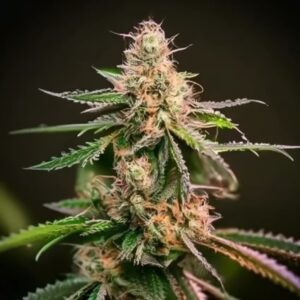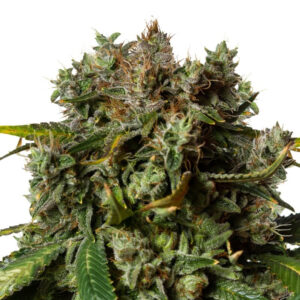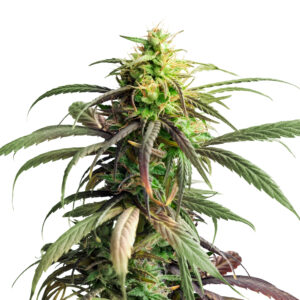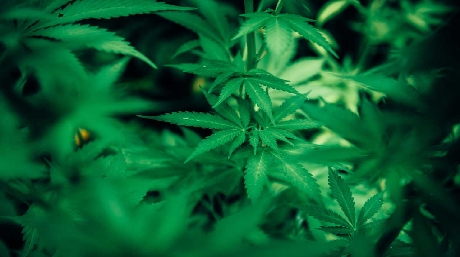Unlock the Secrets to Grow Your Own Weed
Growing your own, marijuana has become a popular trend worldwide, offering cannabis enthusiasts a chance to cultivate their high-quality buds right at home. Not only is it a cost-effective alternative to purchasing cannabis, but it also grants you full control over the entire cultivation process. Whether you’re a seasoned grower or a complete novice, this article will provide you with valuable DIY tips and tricks to help you embark on a successful homegrown marijuana journey. Additionally, we’ll explore the advantages of outdoor cultivation and the unique benefits it offers compared to indoor-grown cannabis.
The Appeal of Homegrown Marijuana:
The allure of homegrown weed lies in the ability to have complete control over the entire cultivation process, from seed to harvest. When you grow your own weed, you can choose the strains that align with your preferences, ensuring a diverse and personalized selection in your stash. Whether you’re seeking a strain with specific therapeutic properties or one that delivers a particular flavor profile, the possibilities are endless when you take the cultivation into your own hands.
Moreover, growing weed at home offers a cost-effective alternative to purchasing cannabis from dispensaries or dealers. While the initial investment in equipment and supplies is required, it quickly pays off as you start to harvest your personal, high-quality buds. Not only will you save money in the long run, but you’ll also have the satisfaction of knowing exactly how your plants were cultivated, free from any harmful pesticides or chemicals.
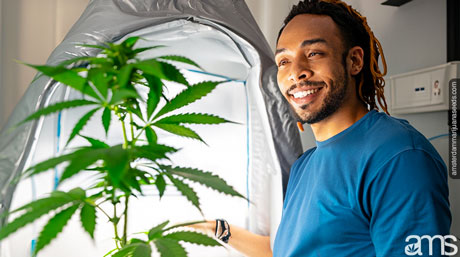
For both seasoned growers and beginners, the art of homegrown marijuana provides a sense of fulfillment and connection to the plant. Nurturing a cannabis plant from seedling to maturity allows you to develop a deep understanding of its growth patterns, nutrient requirements, and environmental needs. This firsthand knowledge translates into a greater appreciation for the plant’s complexities and a deeper connection to the final product.
By growing your own, marijuana, you gain the freedom to experiment with different cultivation techniques, such as soil or hydroponics, and explore innovative methods like low-stress training or screen of green (SCROG). This hands-on approach empowers you to fine-tune the growing conditions, tailoring them to the specific needs of each strain and maximizing their potential for robust growth, potency, and flavor.
Getting Started with Indoor Cultivation:
When it comes to indoor cultivation, creating an optimal growing environment is key to the success of your homegrown marijuana. By setting up a well-designed grow room, you can provide the ideal conditions for your plants to thrive. Here are some essential steps to get you started on your indoor cultivation journey:
- Choose the right strain: Selecting the right strain is crucial for indoor cultivation success. Consider factors such as the strain’s growth characteristics, flowering time, size, and resistance to pests. Indica-dominant strains, for example, tend to be shorter and more compact, making them suitable for limited vertical space.Feminized cannabis seeds are specifically engineered to produce only female plants, as implied by their name. The key benefit of utilizing these seeds is the almost exclusive yield of female plants, removing the requirement to identify and discard male plants. This efficiency can significantly enhance your overall yield, ensuring that every plant you cultivate is capable of producing buds. Nonetheless, it’s important to consider that feminized seeds may come at a higher cost and might be less resilient to environmental stress compared to regular seeds. Furthermore, they limit natural genetic variation, which could be a drawback for growers who enjoy experimenting with their crops.
- Designate a dedicated space: Identify a specific area in your home that can be dedicated to your indoor garden. It could be a spare room, a closet, or even a grow tent. Ensure that the space is well-ventilated and secure, and provides adequate room for your plants to grow. This designated area will allow you to control the growing environment more effectively.

- Set up proper ventilation: Adequate ventilation is essential for maintaining fresh air circulation and controlling temperature and humidity levels in your grow room. Use exhaust fans to remove stale air and bring in fresh air from outside. This will help prevent issues like mold and mildew and provide your plants with the proper exchange of gases.
- Provide suitable lighting: Since indoor plants lack natural sunlight, providing artificial lighting is crucial. LED grow lights are popular among indoor growers due to their energy efficiency and ability to provide the full light spectrum necessary for all stages of plant growth. Consider the wattage and coverage area of the lights based on the size of your grow space and the number of plants you intend to cultivate.
- Optimize temperature and humidity: Cannabis plants thrive within specific temperature and humidity ranges. Aim for temperatures between 70-85°F (21-29°C) during the day and slightly cooler temperatures at night. Additionally, maintain relative humidity levels between 40-60% during the vegetative stage and lower it to 30-40% during flowering to prevent mold and other issues. Using a hygrometer and a thermometer will help you monitor and adjust these factors accordingly.
- Choose the right growing medium: Selecting the appropriate growing medium is crucial for indoor cultivation. Popular options include soil, soilless mixes, and hydroponics. Each medium has its own advantages and considerations. Soil is user-friendly and forgiving, while hydroponics offers faster growth rates and increased nutrient control. Consider your experience level and preferences when choosing a growing medium.
- Provide proper nutrients: Cannabis plants require a range of nutrients to grow and thrive. You can use pre-mixed nutrient solutions designed specifically for cannabis cultivation or create your own using organic or synthetic fertilizers. Remember to follow the recommended dosage and feeding schedule for each stage of growth to ensure your plants receive the right nutrients at the right time.
- Implement a watering schedule: Overwatering is a common mistake among novice growers. It’s important to establish a watering schedule based on the specific needs of your plants and the growing medium you’re using. Allow the soil or growing medium to dry out slightly between waterings to avoid issues like root rot. Pay attention to your plants’ visual cues, such as drooping leaves or light pots, to determine when they need watering.
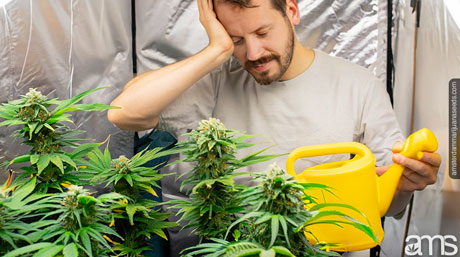
By following these steps, you can lay a solid foundation for your indoor marijuana cultivation. However, it’s important to note that successful indoor growing requires continuous monitoring, adjustment, and a commitment to learning from your plants. Each strain may have specific requirements, so adapt and fine-tune your approach as needed.
The Advantages of Outdoor Cultivation:
While indoor cultivation provides precise control over the growing environment, outdoor cultivation offers unique advantages that are worth considering. Cultivating cannabis in the great outdoors allows you to harness the power of natural elements and offers an authentic connection with nature. Here are some key advantages of growing marijuana outdoors:
- Full spectrum of natural light: One of the most significant benefits of outdoor cultivation is access to the full spectrum of natural light provided by the sun. Natural sunlight contains a diverse range of wavelengths that contribute to the plant’s growth and development. This results in cannabis plants with a richer terpene profile, enhanced flavors, and potentially higher cannabinoid levels. The intensity and quality of natural sunlight cannot be replicated by artificial lighting indoors.
- Cost-effective and sustainable: Outdoor cultivation is generally more cost-effective compared to indoor setups. You don’t need to invest in expensive grow lights, ventilation systems, or climate control devices. Instead, you rely on the sun, rainwater, and the nutrients present in the soil. This environmentally friendly approach minimizes energy consumption and reduces your carbon footprint.
- Expansive growth potential: Outdoor plants have the advantage of having ample space to grow and spread their roots. This results in larger plants with the potential for higher yields. Cannabis plants grown outdoors can reach impressive sizes, especially when provided with proper care and attention. The abundant space allows the plants to develop robust root systems, which can contribute to increased nutrient uptake and overall plant health.
- Enhanced flavors and aromas: Growing cannabis outdoors exposes the plants to a variety of environmental factors that can enhance their flavors and aromas. Factors such as soil composition, regional climate, and exposure to natural elements contribute to the unique taste profiles of outdoor-grown marijuana. Many enthusiasts appreciate the earthy, natural flavors and aromas that come from outdoor cultivation.
- Sun-kissed experience: There is something truly special about witnessing your plants basking in the warm embrace of the sun. The connection to nature and the joy of nurturing a plant under the open sky can provide a deeply satisfying experience. Additionally, spending time outdoors and engaging in the physical act of gardening can be therapeutic and offer a sense of relaxation and mindfulness.
- Sustainability and self-sufficiency: Growing cannabis outdoors aligns with a sustainable and self-sufficient lifestyle. By relying on natural resources and reducing your dependence on commercial suppliers, you have greater control over the quality and safety of your cannabis. Additionally, the experience of growing your own, marijuana, from seed to harvest provides a sense of accomplishment and self-reliance.

While outdoor cultivation offers numerous advantages, it’s important to consider potential challenges as well. Factors such as climate, pests, and local regulations may impact your outdoor grow. It’s crucial to select cannabis strains that are well-suited to your specific climate and to implement proper pest prevention measures. Additionally, familiarize yourself with local laws and regulations surrounding outdoor cultivation to ensure compliance.
Experimentation and Personalization: Unleashing Your Creativity in Homegrown Marijuana
One of the most exciting aspects of homegrown marijuana is the opportunity to experiment and personalize your cultivation techniques. When you grow your own weed, you have the freedom to explore different methods and strategies that align with your preferences and goals. Here are some avenues for unleashing your creativity in homegrown marijuana:
- Training techniques: Cannabis plants can be trained and shaped to optimize their growth and maximize yields. Techniques like topping, pruning, and low-stress training (LST) allow you to manipulate the plant’s growth patterns, control its height, and encourage the development of multiple bud sites. Each training technique offers a unique approach to shaping your plants and can result in diverse plant structures and improved light penetration.
- Nutrient customization: Customizing nutrient regimens allows you to fine-tune the nutrient composition based on the specific needs of your plants and your desired outcomes. You can experiment with different organic or synthetic nutrient formulas, adjust nutrient ratios during different growth stages, and incorporate additives or supplements to enhance certain characteristics like terpene production or bud density. Keeping detailed notes and observing the effects of various nutrient combinations will help you refine your approach.
- Growing mediums and substrates: While soil is a common growing medium, there are alternative options that can add another layer of experimentation. Coco coir, perlite, vermiculite, or a mix of these can be used as soilless alternatives, offering improved drainage and aeration. Hydroponic systems, such as deep water culture (DWC) or nutrient film technique (NFT), provide precise control over nutrient delivery and can result in accelerated growth rates. Exploring different growing mediums and substrates allows you to observe how they impact plant health, growth, and flavor.
- Genetic selection and breeding: As you gain experience and confidence, you may find yourself intrigued by the possibility of creating your own unique cannabis strains through breeding. By selecting and crossing different parent plants with desirable traits, you can unlock new combinations of flavors, aromas, and effects. While breeding requires knowledge and patience, it can be a rewarding endeavor for those passionate about genetics and innovation.
- Organic and sustainable practices: Homegrown marijuana offers an opportunity to embrace organic and sustainable cultivation practices. You can experiment with composting, natural pest control methods, and regenerative gardening techniques. By nurturing the soil microbiome and minimizing your environmental impact, you can produce cannabis that is not only high-quality but also aligns with your values and ethics.
Remember, experimentation is key to unlocking new possibilities and expanding your knowledge as a grower. Keeping a journal to document your methods, observations, and outcomes will help you track your progress and make informed decisions in future grows.

Conclusion:
Growing your own marijuana at home, whether indoors or outdoors, is a rewarding endeavor that offers cannabis enthusiasts a unique and satisfying experience. By following the DIY tips and tricks provided in this article, you can embark on a successful cultivation journey and enjoy the fruits of your labor. Whether you choose the precise control of indoor cultivation or the natural benefits of outdoor growing, the art of homegrown marijuana allows you to customize your strains, control the growing environment, and develop a deeper connection with the plant.
Embarking on your cannabis cultivation adventure opens a world of possibilities. You’ll have the opportunity to experiment with different techniques, personalize your growing methods, and unleash your creativity as a grower. As you fine-tune your skills and knowledge, you’ll discover what works best for you and your unique growing environment.
The satisfaction derived from nurturing a cannabis plant from seed to harvest is unparalleled. From selecting the perfect strains to savoring the flavors and effects of your homegrown buds, the journey is filled with joy, learning, and a sense of accomplishment. Moreover, the cost-effectiveness and self-sufficiency that come with growing your own marijuana add to the appeal of this practice.
So, whether you’re a seasoned cultivator or a novice grower, it’s time to grab your gardening tools and embark on your own cannabis cultivation adventure today. By following the guidance provided in this article and staying curious and open-minded, you’ll unlock the secrets of growing your own weed and discover the immense satisfaction and rewards it brings.
Remember, the journey of homegrown marijuana is a continuous learning process. Embrace the challenges, adapt your techniques, and enjoy the unique experience of cultivating and consuming your very own high-quality buds.
Happy growing!
FAQs about Homegrown Marijuana
Growing marijuana at home offers advantages such as cost-effectiveness, full control over the cultivation process, personalized strain selection, and the satisfaction of knowing how your plants were cultivated.
To get started with indoor cultivation, you need to choose the right strain, designate a dedicated space, set up proper ventilation and suitable lighting, optimize temperature and humidity, choose the right growing medium, provide proper nutrients, and implement a watering schedule.
Outdoor cultivation offers advantages such as access to the full spectrum of natural light, cost-effectiveness and sustainability, expansive growth potential, enhanced flavors and aromas, a sun-kissed experience, and a sense of sustainability and self-sufficiency.





